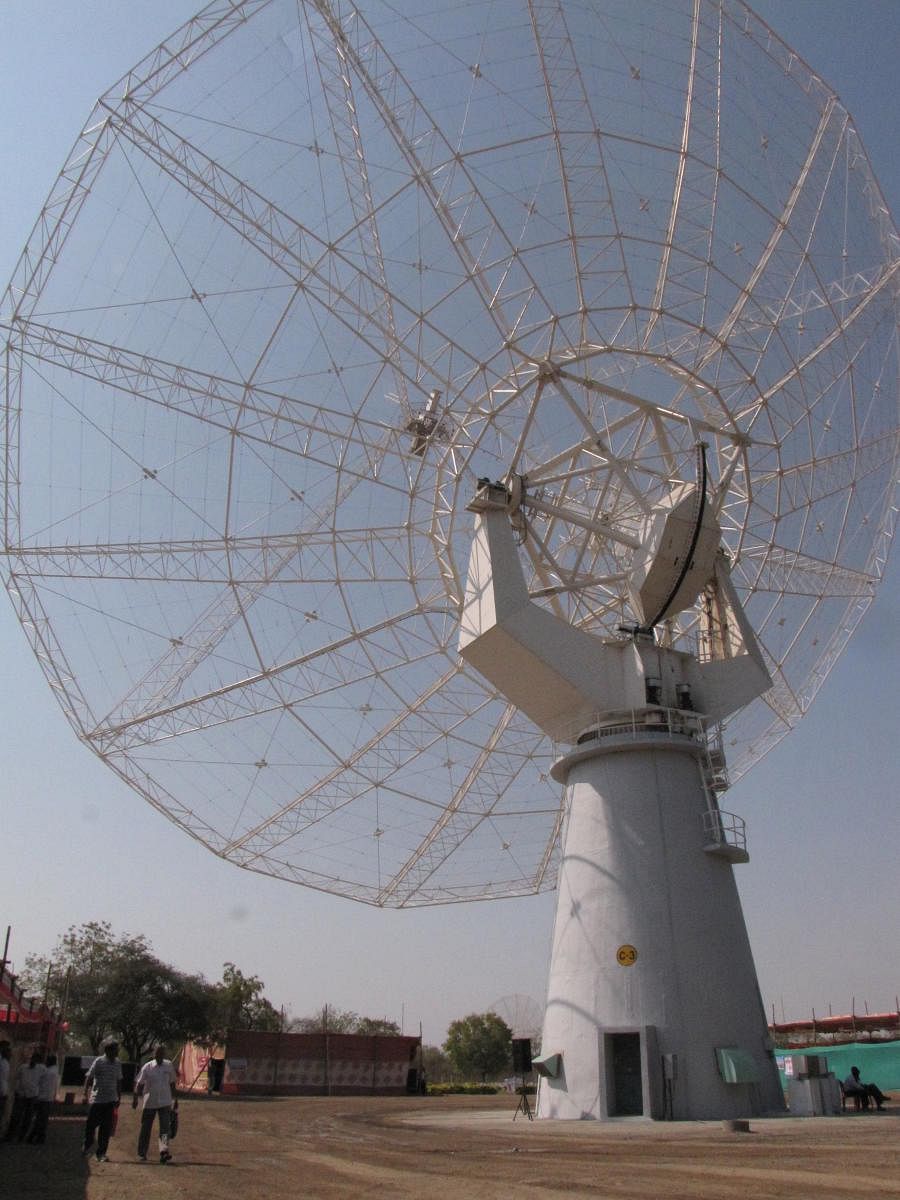
Indian astronomers have reported discovery of a new category of distant radio-galaxies that don't appear to follow the rules, which thousands of such galaxies are known to obey.
Using observations made with the Giant Meter Wave Radio Telescope near Pune, scientists at the National Centre for Radio Astronomy have confirmed discovery of at least one such type of radio-galaxies out of seven shortlisted initially.
A second radio source is also "very likely" to be fall in the new category.
With the GMRT receiving a recent upgrade enhancing its sensitivity by 10 times, scientists are now set to expand their search for more such candidates in order to further establish their findings of a new class of rare radio-galaxies beyond any doubt.
Galaxies including our very own Milky Way, are distant star clusters. A small subset of such clusters that emits exceptionally powerful emission at radio frequencies, are radio galaxies.
The human understanding of the cosmos was revolutionised by radio astronomy in the past 70 years. Astronomers use telescopes like GMRT to capture the signature of radio waves coming from the distant part of the sky to learn about the Universe's origin and evolution.
All radio galaxies emit the waves following a specific pattern that comes from a physical process known as synchrotron mechanism. The NCRA work, if verified subsequently by other independent studies, can change that notion.
"It was believed to be a universal mechanism that applies to all the radio-galaxies catalogued in the astronomy. Our work for the first time suggests that there may be a small group of radio-galaxies that function in a different mechanism,” NCRA scientist and team leader Gopal Krishna told DH.
The NCRA researchers named the new class of radio sources as EISERS or Extremely Inverted Spectrum Extra-galactic Radio Sources. The estimated age of the two identified radio sources is almost half of that of the Universe.
"This discovery has the potential to challenge the current understanding that a universal mechanism can explain the emission of radio waves in all radio sources,” the institute says in a statement.
"We carried out the observation in 2014, but the data analysis took time. With the upgraded GMRT we will now launch the next phase of the study,” said Surajit Paul, another member of the NCRA team.
The research has been published in the international journal, Monthly Notices of the Royal Astronomical Society, London.
